The global online food delivery market size was valued at $343.7 billion in 2022, and is projected to reach $1.3 trillion by 2032, growing at a CAGR of 14.3% from 2023 to 2032. Source: Allied Market Research
The rise of food delivery apps has revolutionized how people order and enjoy meals. With just a few taps, users can browse menus, place orders, and have food delivered to their doorstep. This convenience is no accident, and it’s the result of advanced technology and the growing impact of AI in food delivery, powering everything from personalized recommendations to real-time logistics behind the scenes.
However, behind this convenient experience lies a complex ecosystem powered by seamless technology, that we call Artificial Intelligence (AI).
From predictive analytics to smart chatbots, AI in food delivery apps has redefined operational efficiency, customer satisfaction, and profitability. But how is AI used in food delivery? And why should businesses looking to develop a food delivery app invest in AI-powered solutions?
In this blog, we’ll explore the role of AI in food delivery apps, real-world examples, case studies, and why businesses should consider outsourcing their food delivery app development to an expert IT company like Kody Technolab Ltd.
What is the Role of Technology in Food Delivery?
The food delivery industry has undergone a significant transformation in recent years, driven by advancements in Artificial Intelligence (AI), machine learning, and automation.
Increasing consumer demand for faster, more efficient, and personalized food delivery services is elevating the role of AI in food delivery. From optimizing operations to improving customer experience and boosting profitability, technologies like AI food ordering are reshaping how restaurants and platforms serve their users.
From AI-based food delivery apps to autonomous delivery systems, technology is changing how restaurants, aggregators, and logistics providers handle orders, manage resources, and interact with their customers. Our Food Delivery App Development Guide explores how to navigate this shift with the right strategies and tools.
Why Your Food Delivery App Needs Artificial Intelligence?
Integrating artificial intelligence within food delivery apps helps organizations improve process efficiency, reduce operational costs, and deliver a higher quality customer experience. An AI-powered food ordering system supports these improvements by streamlining logistics, enhancing personalization, and optimizing key decision-making across the platform.
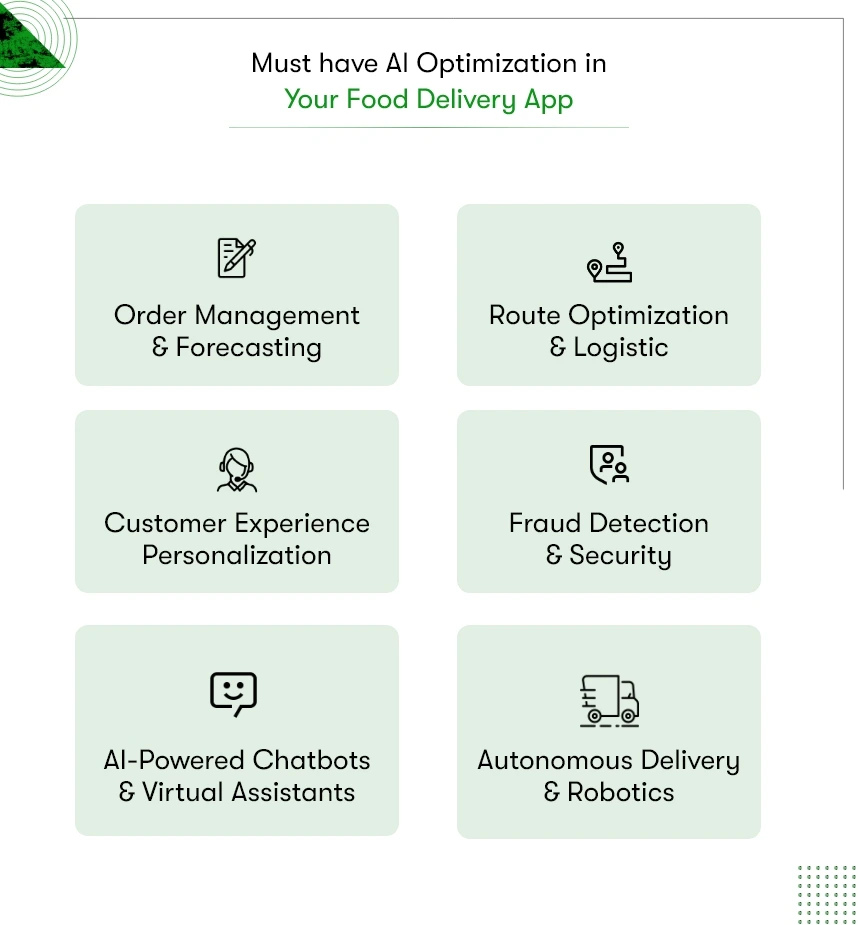
1. AI-Powered Demand Forecasting & Order Management
Demand Forecasting is a very crucial use of AI by food delivery businesses. Food delivery platforms use these machine learning models to analyze history order data along with weather and local events so that they predict demand fluctuations with consumer behavior in advance.
How It Works:
- AI algorithms process large real-time and historic data to ascertain trends and peak hours.
- Restaurants get automated suggestions in managing the inventory to avoid wastage and stock availability at the right time.
- Delivery platforms change resource allocation in real time, avoiding delays at peak hours.
Benefits:
- Reduced food wastage through smarter inventory planning.
- Optimized staffing schedules to meet demand surges.
- Improved order accuracy and customer satisfaction.
2. Route Optimization & Logistics
Efficient route optimization is important for reducing delivery times and fuel costs. AI-driven food delivery apps use GPS, machine learning, and real-time traffic data to calculate the fastest delivery routes dynamically.
AI Techniques Used:
- Predictive Analytics: AI estimates delivery times based on real-time traffic, weather, and historical data.
- Dynamic Routing Algorithms: AI reroutes drivers in real-time to avoid congested areas and optimize fuel efficiency.
- Clustered Order Assignments: AI groups nearby orders to reduce the number of trips per driver.
Benefits:
- Faster deliveries with reduced wait times for customers.
- Lower operational costs for food delivery platforms.
- Enhanced driver efficiency and satisfaction.
3. Personalization & AI-Driven Customer Experience
Customer experience has been significantly enhanced through the use of AI in food delivery applications, offering relevant recommendations, tailored promotions, and behavioral insights. As a key part of AI in food service, these personalized interactions help businesses build stronger customer relationships and drive repeat orders.
Key AI Features in Customer Experience:
- Personalized Food Suggestions: AI evaluates customer preferences, order history, and dietary habits to recommend the most appropriate meal for a person’s taste.
- Dynamic pricing strategies adjust based on real-time demand, loyalty of the customers, and even competitor’s actions.
- Real-Time Order Tracking: AI allows real-time tracking with predictive ETAs, which minimizes customer anxiety about delays.
Benefits:
- Increased order frequency and customer retention.
- Higher revenues by means of upselling and targeted promotions.
- Improved customer satisfaction with tailored experiences.
4. AI for Detecting Fraud and Security in Food Delivery
Fraud against food delivery companies includes fake orders, account takeovers, promo code abuse, and payment fraud. An AI-powered food ordering system can help detect and prevent these activities by analyzing patterns in real time and flagging suspicious behavior before it causes losses.
AI-based fraud detection systems utilize:
- Machine Learning Algorithms to detect patterns of suspicious transactions.
- Biometric Authentication, such as face recognition or voice authentication, to prevent unauthorized access to the account.
- Behavioral Analytics to point out abnormal order activity, such as multiple high-value orders coming from a new account.
Benefits:
- Chargebacks and financial losses are reduced.
- Increased platform security and trustworthiness.
- Operational risk will be reduced for food delivery companies.
5. AI-Powered Chatbots & Virtual Assistants
Many food delivery apps now feature AI-driven chatbots to handle customer support queries, order modifications, and complaints. These tools are often part of a broader AI platform for food innovation, enabling smarter, faster, and more consistent customer interactions across the entire service experience.
These chatbots:
- Use Natural Language Processing (NLP) to understand customer requests.
- Provide real-time support, reducing wait times for human agents.
- Assist in order tracking, refunds, and personalized promotions.
Benefits:
- 24/7 customer support without the need for human intervention.
- Faster response times and improved customer satisfaction.
- Lower operational costs for food delivery platforms.
6. Autonomous Delivery & Robotics in Food Delivery
AI-driven robotic delivery solutions are revolutionizing the last-mile delivery process. Companies like Uber Eats, DoorDash, and Starship Technologies are experimenting with automated delivery bots, route optimization, and predictive logistics.
These advancements are often powered by an AI platform for food innovation, which combines machine learning, real-time data, and robotics to streamline delivery, reduce wait times, and enhance customer satisfaction.
- Autonomous Delivery Vehicles (ADVs): AI-powered delivery robots navigating sidewalks and streets.
- Drone Delivery: AI-controlled drones deliver food in minutes.
- Smart Kitchen Automation: AI-assisted robotic cooks preparing food at cloud kitchens.
Benefits:
- This helps reduce delivery costs by reducing the reliance on human couriers.
- Better and contactless delivery solutions.
- Improved scalability for food delivery applications.
From demand prediction to route optimization, fraud prevention to autonomous delivery, AI is driving innovation at each point of the food delivery supply chain. These advancements reflect how AI for food service industry applications are reshaping operations and customer expectations.
This creates opportunities for food delivery app owners to develop cutting-edge AI-driven solutions that can further optimize logistics, elevate customer engagement, and improve security.
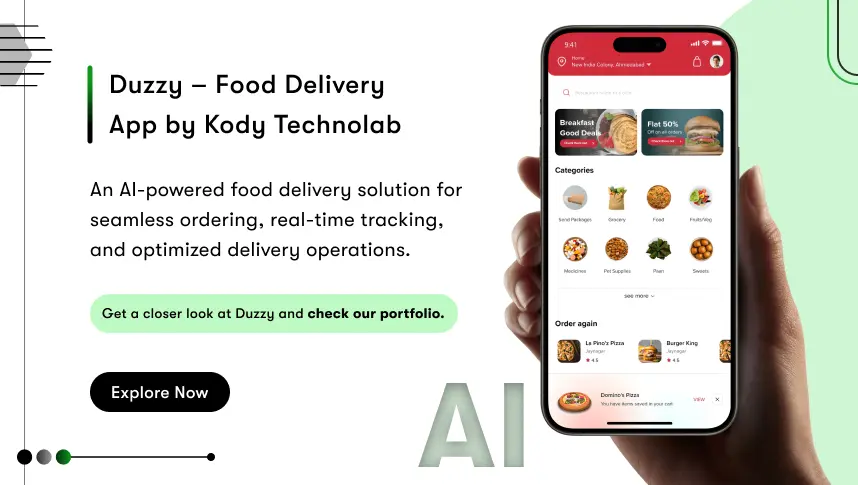
What are the Key Features of AI-powered Food Delivery Apps?
The inclusion of AI in the food delivery industry improves decision-making, automates processes, and personalizes services.
Developing or optimizing a food delivery platform, understanding its key features, especially those powered by AI; for entrepreneurs owning food delivery business ensures competitiveness.
Now, let’s analyze the critical features of a modern food delivery application, the role of AI in modern food delivery applications, and how AI refines these functionalities.
1. Personalized Food Suggestions:
One of the most effective applications of AI in food delivery apps is personalized recommendations based on user preferences, order history, and behavioral data. Machine learning algorithms analyze browsing patterns and past orders to suggest dishes that align with customer tastes.
2. Dynamic Menu Customization:
Restaurants can leverage AI to dynamically adjust menus based on stock availability, trending dishes, and customer preferences. AI can also recommend optimized pricing strategies using demand forecasting.
3. AI Chatbots for Ordering Assistance:
AI-driven chatbots improve customer engagement by offering real-time order assistance, suggesting meal options, and answering FAQs. NLP (Natural Language Processing) enables these bots to understand user intent and provide human-like interactions.
4. Real-Time Traffic Analysis:
AI integrates GPS and traffic data APIs to calculate the fastest delivery routes while avoiding delays and ensuring optimal fuel efficiency. This capability is especially important in food delivery, where freshness and timing are critical.
An AI platform for food innovation enables this level of precision by combining real-time location data with predictive routing algorithms tailored to the needs of the food industry.
5. Predictive Delivery Time Estimation:
Using machine learning models, food delivery apps can predict estimated delivery times based on order volume, restaurant preparation time, rider availability, and real-time traffic conditions. These predictive capabilities are key components of AI in food delivery, helping platforms manage user expectations and improve satisfaction.
When combined with AI food ordering systems, this ensures a smoother, more accurate, and efficient ordering experience from start to finish.
6. Predicting High-Demand Periods:
AI in the food delivery industry helps businesses anticipate peak demand periods by analyzing historical data, seasonal trends, and local events. This allows for optimal resource allocation, both in terms of delivery partners and restaurant inventory.
As AI in food service and AI in food delivery continue to evolve, businesses can operate more efficiently while delivering faster, fresher, and more reliable experiences to customers.
7. Waste Reduction through Smart Inventory Management:
AI models scan through historical consumption patterns to anticipate ingredient needs to avoid overstocking and thereby minimize food wastage. This helps restaurants plan better stock procurement according to current demand.
8. Fraud Prevention with AI:
AI detects anomalies in transactions, such as multiple high-value orders from a new account, unusual delivery locations, or repetitive refund requests. Machine learning algorithms flag suspicious activities and enhance security.
9. Automated Customer Query Resolution:
AI chatbots handle common customer queries such as order tracking, refund status, and complaint registration, reducing the need for human intervention and improving response times.
As part of a broader AI platform for food innovation, these chatbots enhance operational efficiency while ensuring a seamless customer experience.
Their role in AI in food delivery goes beyond automation, and they help build trust and satisfaction through instant, accurate support.
10. Surge Pricing & Discount Optimization:
AI helps food delivery platforms implement dynamic pricing strategies, adjusting delivery fees based on demand, weather conditions, and real-time restaurant capacity. Additionally, AI optimizes discount campaigns by analyzing customer purchasing behavior.
11. Predictive Analytics for Customer Retention:
AI identifies at-risk customers who haven’t placed an order recently and triggers personalized offers or discounts to re-engage them. This shows how can AI assist in the food delivery process by increasing repeat orders and improving customer lifetime value.
12. Gamification & Loyalty Programs:
AI enhances customer engagement by personalizing loyalty rewards and recommending challenges (such as ordering from different cuisines) to keep users engaged.
For food delivery app owners looking to enhance food delivery apps, Artificial Intelligence is no longer something optional but the necessity to maintain a competitive level in an AI-driven landscape.

What are the Potential Future Trends in AI-powered Food Delivery Apps?
As witnessed, the food delivery industry is undergoing a technological revolution, which is mainly being driven by the advancements in AI in food delivery apps. It is now given that the future of food delivery app services will be shaped by AI-driven autonomous delivery methods, logistics, and a customer experience that is highly personalized.
For restaurant owners looking to develop a food delivery app solution, it is now crucial to take note of the AI trends that are to enter the food delivery app development.
Drone-Based Food Delivery
- AI in food delivery apps will integrate with autonomous drones for ultra-fast service, especially in urban areas with heavy traffic.
- Real-time air traffic monitoring powered through an AI platform for food innovation will help optimize flight paths and ensure efficient, obstacle-free delivery.
AI-Powered Delivery Robots
- Ground-based delivery robots will use computer vision, LiDAR, and AI-based navigation to manage last-mile delivery in smart cities.
- These robots will interact with users through facial recognition and chatbots, showcasing how AI in food service is enhancing automation and customer convenience.
Self-Driving Cars for Large-Scale Food Delivery
- Companies like Uber Eats and Domino’s are using autonomous vehicles to scale food delivery. AI in food delivery app will handle route optimization, traffic response, and real-time ETA predictions.
- These advancements reflect the growing role of AI for food service industry efficiency.
Voice-Activated Food Ordering
- Users can place orders through AI-driven voice assistants like Alexa, Google Assistant, and Siri. Natural Language Processing (NLP) will help understand complex food preferences.
- This is a major feature of any modern ai-powered food ordering system, built for hands-free convenience.
Image-Based Food Identification
- AI will enable users to upload food images, and the app will suggest similar dishes from restaurant menus using computer vision algorithms.
- Food bloggers and social media users will benefit from real-time food recognition, allowing them to order dishes they see online instantly.
- This feature benefits social media users and food bloggers, while reinforcing the value of a visual-first AI-powered food ordering system.
Automated Kitchen Management
- AI-powered smart kitchens will automate cooking processes, reducing order preparation time.
- Robotics and AI-driven food preparation systems will ensure consistent food quality and efficiency.
Surge Pricing According to Demand
- AI will automatically adjust delivery fees, pricing, and discounts based on real-time demand patterns.
- This AI-based price optimization allows restaurants and delivery partners to stay profitable while using AI for food service industry optimization to meet customer expectations.
Personalized Discounts & Loyalty Programs
- Artificial Intelligence in food delivery apps will identify at-risk customers who will be offered a personalized discount to bring them back.
- AI will optimize loyalty programs based on individual user preferences, ensuring higher engagement and retention.
Decentralized Payment Systems
- Blockchain-based smart contracts will enable secure, transparent, and automated transactions between customers, restaurants, and delivery partners.
- Cryptocurrencies and AI-powered fraud detection will enhance transaction security.
AI-Driven Food Safety & Traceability
- AI will integrate with blockchain to track the entire food supply chain, ensuring quality control and compliance with food safety regulations.
- Customers will scan QR code on a food item to check its origin, freshness, and expiry date.
The future of food delivery apps will feature AI-powered automation, live data analytics, and seamless customer experiences. From fully autonomous delivery drones to voice-command ordering and personalized meal suggestions, AI is redefining how users interact with food services.
At the center of this shift is the AI-powered food ordering system, which brings speed, personalization, and precision to every step of the ordering journey.
What are some Examples and Case Studies of AI-powered Food Delivery Apps?
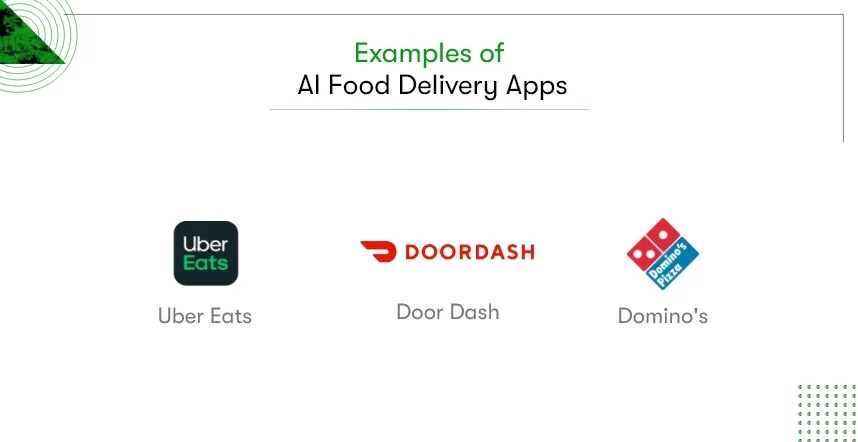
Leading food delivery platforms worldwide are leveraging AI for route optimization, personalized recommendations, demand forecasting, and fraud prevention.
Understanding how AI in the food delivery industry is applied in real-world scenarios can provide insights into building and scaling intelligent food delivery solutions.
Uber Eats – AI-Driven Personalization & Route Optimization
AI Features Used in Uber Eats
Smart Recommendations and Personalization
With Artificial Intelligence, Uber Eats uses all its knowledge of the user’s preferences, order history, and browsing behavior to suggest personalized meal recommendations from food delivery apps.
Their AI models consider the following:
- Previous orders and favorite cuisines
- Time of day and order frequency
- Weather conditions influencing food choices
- AI-Based Route Optimization for Fast Delivery
Uber Eats optimizes delivery logistics using machine learning models that analyze traffic patterns, restaurant preparation times, and real-time rider availability. These intelligent systems are part of a broader AI food ordering strategy that ensures meals arrive faster and fresher.
As a leading example of AI for food service industry innovation, Uber Eats uses real-time data to assign the most efficient delivery routes, reducing wait times and improving customer satisfaction.
AI-Powered Demand Forecasting
- Uber Eats applies predictive analytics for:
- Anticipate times of high demand (lunch rush, days of bad weather)
- Rebalance restaurant prioritization and delivery partner allocation
- Optimize Promotions and Dynamic Pricing
Impact of AI: Uber Eats’ AI-powered approach has led to reduced delivery times, higher customer engagement, and optimized food preparation processes for partner restaurants.
DoorDash – AI for Logistics & Customer Retention
AI Features Used in DoorDash
Machine Learning for Efficient Order Dispatching
DoorDash’s AI-driven dispatch system predicts:
- The fastest available courier based on distance, traffic, and restaurant wait times
- The most efficient route to ensure timely delivery
- Batch deliveries, where a single driver picks up multiple orders along an optimized path
AI-Powered Dynamic Pricing & Promotions
DoorDash uses AI to implement real-time surge pricing based on:
- Demand fluctuations
- Delivery partner availability
- Restaurant workload
Additionally, AI helps optimize promotional campaigns by offering targeted discounts and loyalty rewards to users based on their purchasing habits.
Additionally, AI helps optimize promotional campaigns by offering targeted discounts and loyalty rewards based on users’ purchasing habits. These capabilities are often driven by an AI platform for food innovation, which analyzes customer behavior to deliver personalized marketing strategies that boost engagement and repeat orders.
Predictive AI for Customer Retention
DoorDash leverages AI to identify customers who are at risk of churning (i.e., users who haven’t placed an order in a while) and automatically triggers personalized incentives to encourage them to return.
Impact of AI: DoorDash has enhanced efficiency by reducing order delivery times and increasing customer engagement through AI-powered predictive marketing.
Domino’s – AI for Smart Ordering & Delivery Automation
AI Features Used in Domino’s
AI-Powered Voice Ordering (Domino’s AnyWare)
- Domino’s integrates AI in food delivery apps through voice assistants like:
- Amazon Alexa, Google Assistant, and Apple Siri to take voice orders
- NLP-driven chatbots that handle customer queries and order tracking
AI for Pizza Tracking & Quality Control
- Computer vision AI monitors pizza preparation and ensures quality consistency.
- AI predicts order completion time, providing accurate ETAs to customers.
Autonomous Delivery with AI
Domino’s has experimented with AI-powered self-driving delivery vehicles and drones to reduce delivery time and operational costs.
Impact of AI: Domino’s AI-based innovations have streamlined ordering, improved customer engagement, and introduced faster, automated delivery solutions.
Final Thoughts
AI-driven automation in food delivery is no longer something of the future but is already being adopted by the biggest food delivery companies. AI is revolutionizing each and every aspect of food delivery operations, from AI-powered optimization of routes and demand forecasting to smart recommendations and fraud prevention.
For restaurant owners, the use of Artificial Intelligence in food delivery apps means:
- Developing machine learning models for user experience personalization.
- AI Route Planning for Optimization of Logistics
- This enhances security with AI-based fraud detection.
- Integration of AI chatbots to ensure efficient customer support
Why You Should Partner with Kody Technolab Ltd for Food Delivery App Development
It requires technical expertise and AI integration to develop a food delivery app. Kody Technolab Ltd is leading food delivery app development company, offering:
- Predictive analytics and recommendation solutions powered by AI.
- Seamless application development keeps the user’s experience in focus.
- Scalable architecture that can support increasing demand.
- Advanced security measures to prevent fraud and data breaches.
- End-to-end support, from concept to deployment.
If you’re looking to build a cutting-edge AI-driven food delivery app, Kody Technolab Ltd is your ideal technology partner.

FAQ
1. We already have a food delivery app. Can we add AI without rebuilding it from scratch?
Yes. You can integrate AI into your existing app through APIs or modular systems. Start with route optimization, order prediction, or chatbot automation. Full rebuilds are not always required unless your backend is outdated.
2. We want to cut delivery time and reduce refund rates. Will AI help with that?
Yes. AI in food delivery predicts the fastest courier routes, minimizes delays, and reduces wrong orders through smart mapping and real-time traffic learning. That means fewer refund requests and better on-time delivery rates.
3. Is AI actually helping restaurants increase order value, or is it just hype?
It’s not hype. AI-powered food ordering systems suggest upsells based on user behavior, time of day, and previous orders. Restaurants using this tech report up to 20% increase in average order value with no added marketing spend.
4. We waste a lot of food due to poor forecasting. Can AI fix that?
Yes. AI for food service industry use cases includes demand prediction. It learns from seasonal trends, local events, and customer patterns to help you prep the right amount of food daily, and not too much, not too little.
5. How can we use AI to fix staff shortages or training gaps?
AI can automate order assignment, customer queries, and basic kitchen operations like scheduling or prep status. It reduces dependency on staff for repetitive tasks. Smart chatbots and predictive tools ease pressure on customer service teams.
6. What does a realistic budget look like for AI integration?
A basic AI feature set (chatbots, smart routing, analytics) can cost $30,000–$50,000. A full AI platform for food innovation, including predictive insights and automation, can range from $80,000 to $150,000 depending on your scale and complexity.
7. We’re not a big company. Is AI worth it for a mid-sized delivery business?
Yes. You don’t need to go all-in. Start small. AI helps with real ROI even in smaller setups, like fewer failed orders, better ETAs, smarter pricing. You’ll feel the impact where it matters: in your margins and retention.
8. What AI features give the fastest return for food delivery businesses?
Route optimization, order prediction, smart promos, and chatbot support give the fastest ROI. These features help cut delivery costs, boost repeat orders, and reduce customer support overhead. Prioritize these in your roadmap.
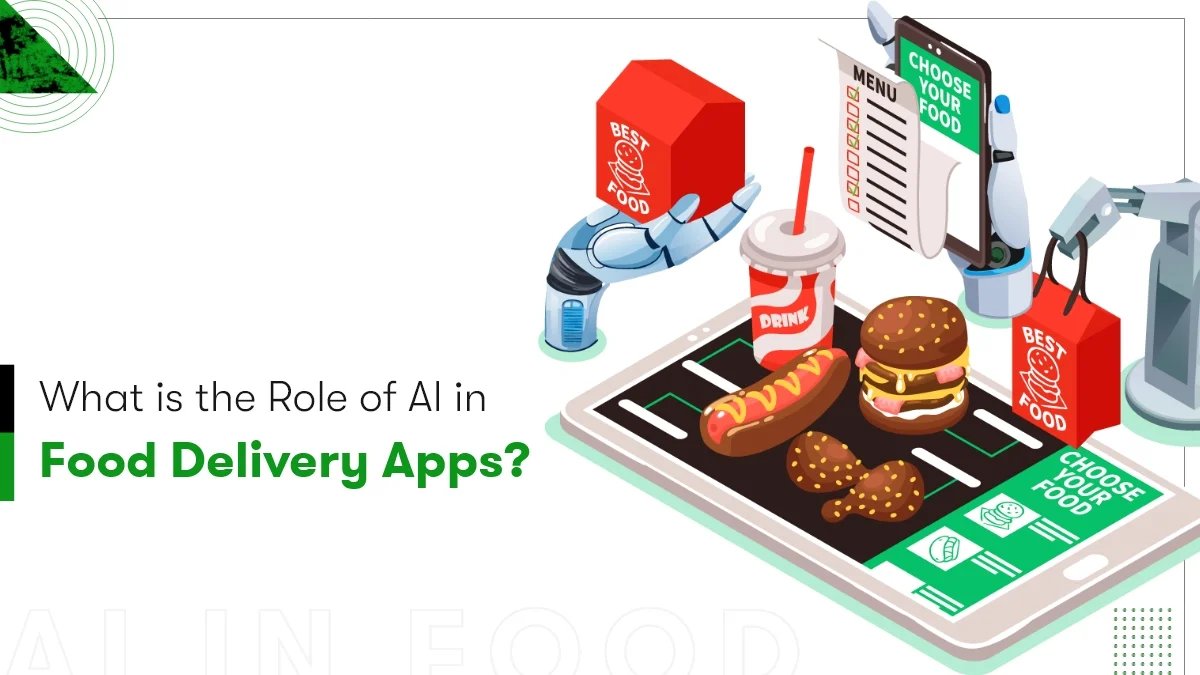
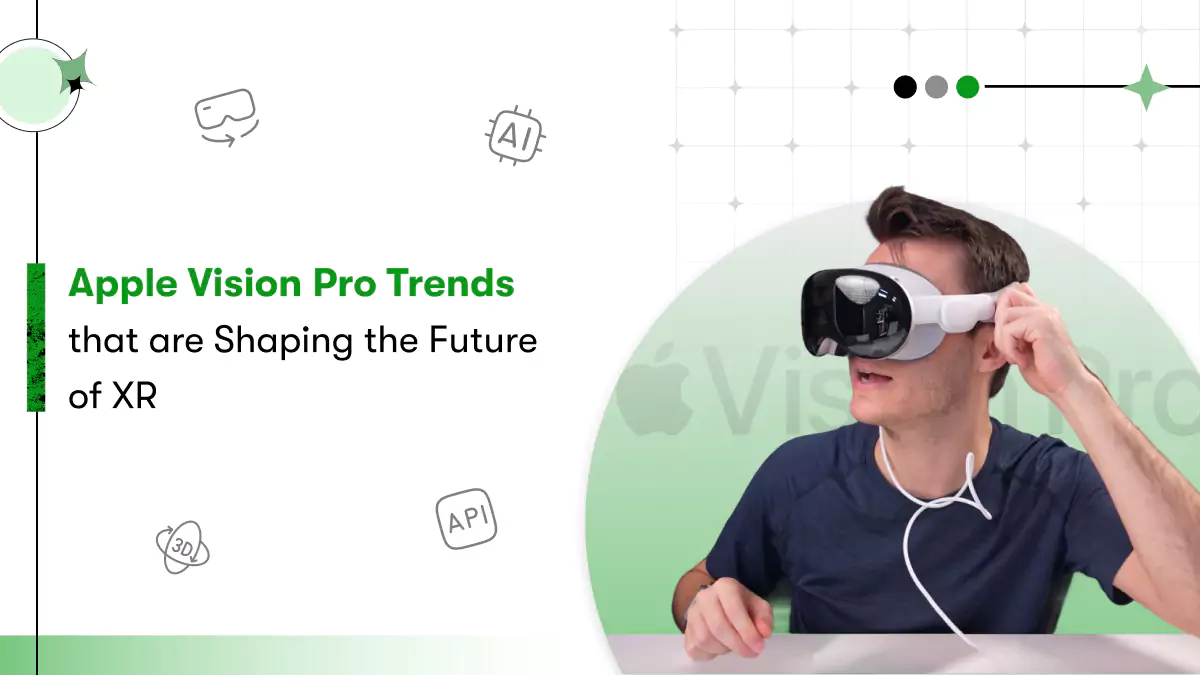
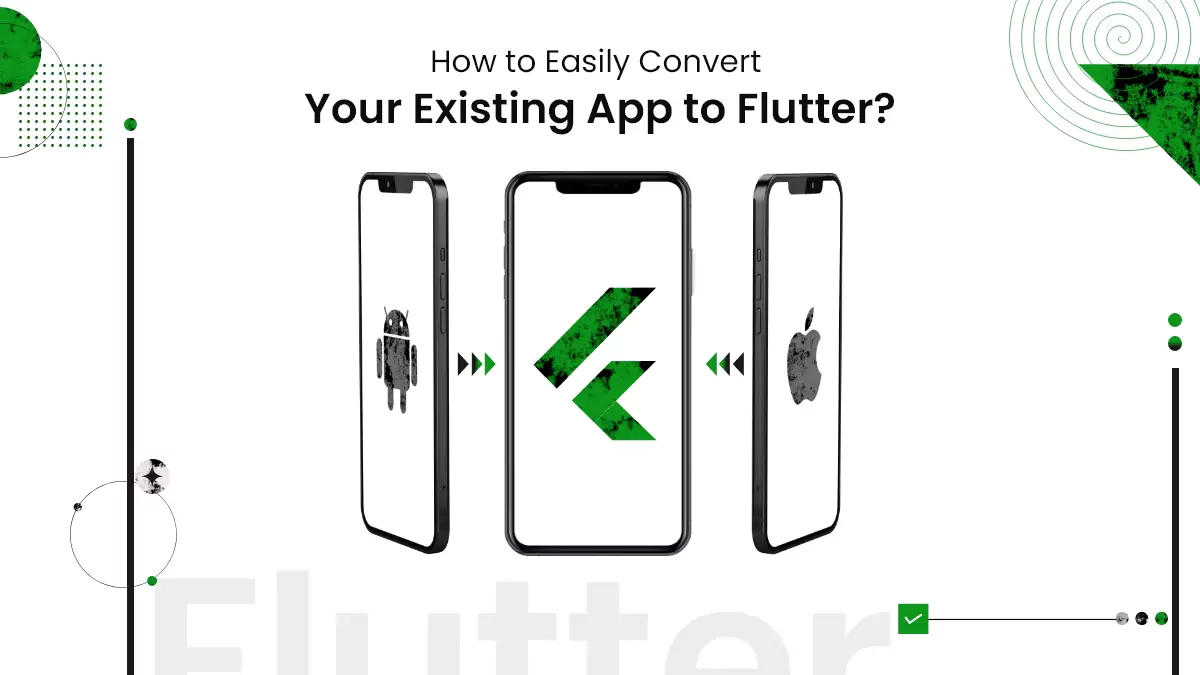
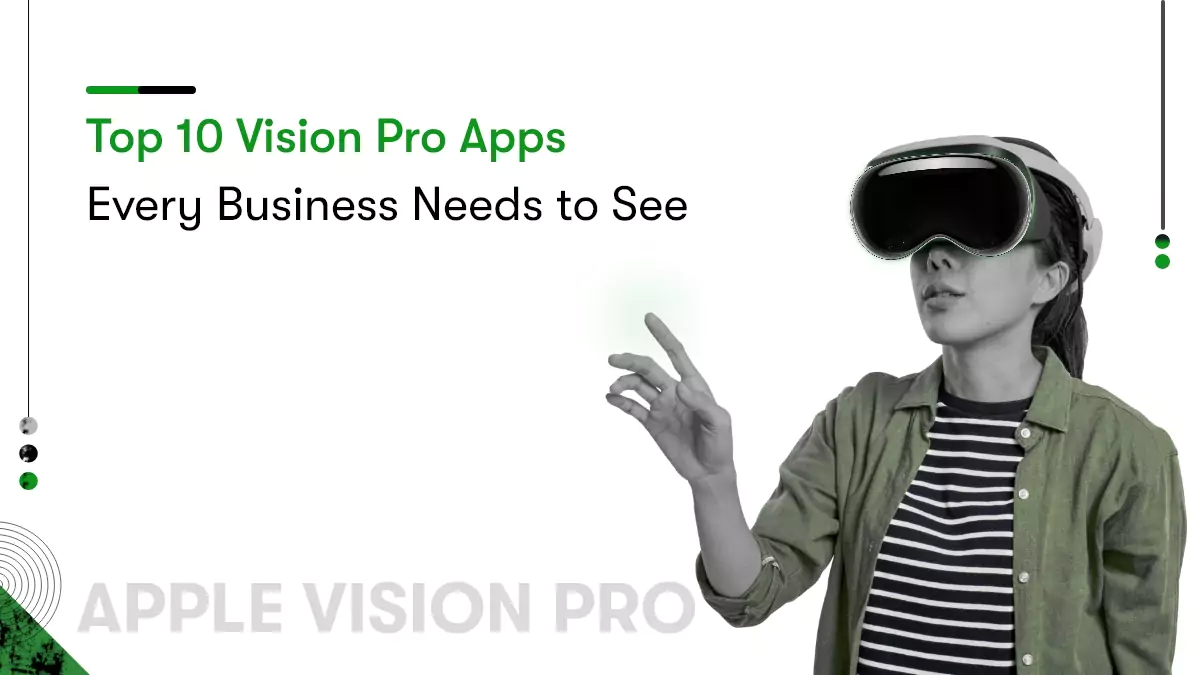

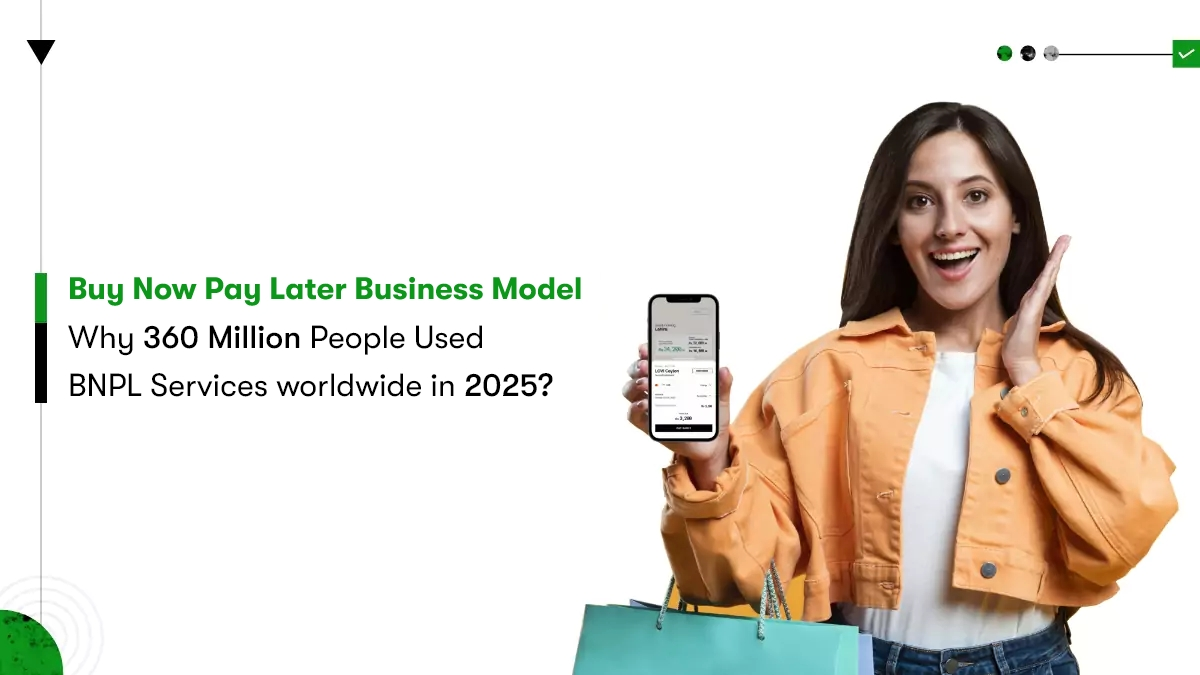





 Contact Information
Contact Information